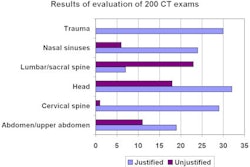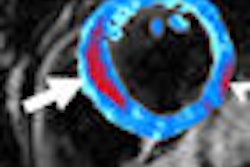
WASHINGTON (Reuters), Feb 20 - Swiss researchers who swapped out some of the parts of a magnetic resonance imaging scanner said on Wednesday they not only made it more efficient, but also less claustrophobic.
Anyone who has had an MRI knows the tight feeling of the tube and the thudding sound of the magnet can create a unique and often disturbing experience. Each scan can cost thousands of dollars.
One reason the MRI tube is so narrow is that the radiofrequency, or RF, coils that produce the magnetic waves for the scan must be very close to the person being scanned.
David Brunner and Klaas Pruessmann of the University of Zurich came up with an alternative, using an antenna and "traveling" radio waves that could be up to 10 feet from the patient.
Writing in the journal Nature they said they used a special conductive lining inside the MRI tube to focus the waves.
It not only leaves more room inside the tube, they said, but provides more uniform coverage over a larger sample.
"This extra space is extremely valuable because the cost of the large, superconducting magnets needed for MRI increases rapidly with size," Paul Glover and Richard Bowtell of the University of Nottingham in England wrote in a commentary.
"Removal of the RF coil thus opens up the possibility of redesigning the scanner's interior to make it more comfortable for patients and/or to reduce cost."
Last Updated: 2009-02-19 12:21:46 -0400 (Reuters Health)
Related Reading
Open MRI reduces patient claustrophobia, study confirms, December 19, 2007
Copyright © 2009 Reuters Limited. All rights reserved. Republication or redistribution of Reuters content, including by framing or similar means, is expressly prohibited without the prior written consent of Reuters. Reuters shall not be liable for any errors or delays in the content, or for any actions taken in reliance thereon. Reuters and the Reuters sphere logo are registered trademarks and trademarks of the Reuters group of companies around the world.



















